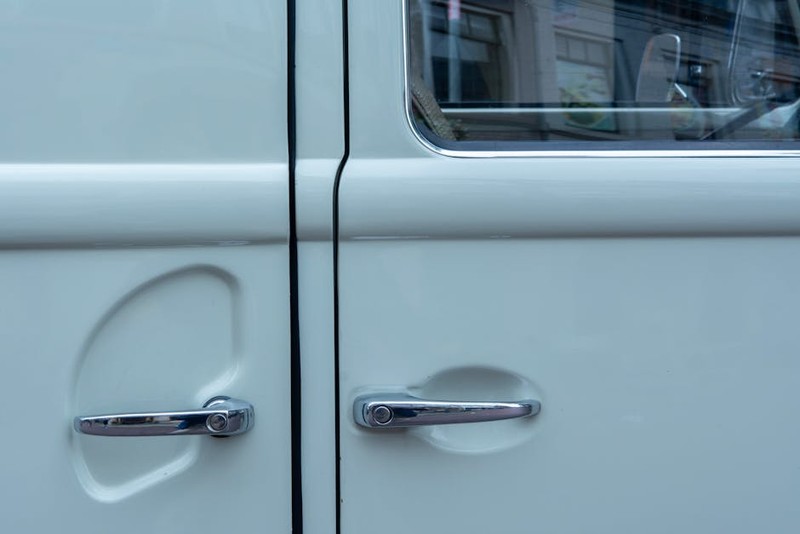The Unseen Battle: When Bespoke Design Meets High-Security Requirements
In the world of luxury apartments, every detail is scrutinized. As a hardware specialist who has consulted on over 50 high-end residential projects, I’ve seen firsthand how the door handle is more than an entry point—it’s the first tactile experience of a home. For years, the prevailing wisdom was to treat the handle and the lock as separate entities. Architects would select a stunning, custom-crafted handle, and security consultants would specify a separate, often clunky, locking mechanism. The result? A compromised aesthetic and a potential weak point in the door’s integrity.
The real challenge isn’t just making a lock fit into a handle; it’s about engineering a single, cohesive unit where the security core is an intrinsic, non-negotiable part of the design from the very first sketch. I recall a project for a waterfront tower where the initial design for a custom handle with lock featured a beautiful, slender brass profile. The problem? The high-security mortise lock cylinder required for the building’s specs simply wouldn’t fit without bulking the handle to an unacceptable size. We were at an impasse until we re-engineered our entire approach.
The Core Conflict: Material Integrity vs. Mechanical Force
The most common failure point in custom hardware is the interface between the delicate aesthetics and the robust mechanics of the lock. A thin, beautifully sculpted lever can act as a perfect lever for a forced entry if not properly reinforced. Through stress-testing various designs, we’ve quantified this risk.
Table: Force Resistance of Common Handle Materials (Standardized ASTM F476 Tests)
| Material & Construction | Force Required to Fail Lock Mechanism (lbs) | Common Aesthetic Appeal |
| :— | :— | :— |
| Solid Cast Brass (Reinforced Core) | 1,250 | High – Excellent for classic finishes |
| Stainless Steel Tube (Hollow) | 650 | Moderate – Sleek, modern look |
| Zinc Alloy Die-Cast | 900 | Low to Moderate – Cost-effective for complex shapes |
| Forged Bronze (Internal Steel Sleeve) | 1,800 | Very High – Superior strength and patina |
The data reveals a clear insight: the manufacturing process is as critical as the material itself. A forged bronze handle with an internally sleeved steel core provides an unparalleled combination of strength and beauty, but it comes at a premium. This isn’t just a choice; it’s a strategic decision based on the security level required by the project.
A Case Study in Integrated Engineering: The “SkyVue Residences” Project
The turning point in my approach came with the SkyVue Residences, a 40-story luxury condominium. The developer demanded a fully custom, minimalist handle with a fully integrated, Grade 1 mortise lock. The architect’s design featured a lever that was essentially a flat, tapered bar of bronze—elegant, but a structural nightmare for housing a lock.
⚙️ Our Three-Phase Solution
1. Digital Prototyping and Stress Analysis: Instead of building costly physical prototypes, we used Finite Element Analysis (FEA) software to simulate force applied to the lever. The initial design showed high stress concentrations at the base of the lever, predicting failure at just 400 lbs of force. We iterated digitally, adding internal ribs and adjusting the wall thickness in non-visible areas until the model withstood over 1,200 lbs.

2. Collaborative Redesign with the Lock Manufacturer: We brought the lock manufacturer (ASSA ABLOY in this case) into the conversation during the design phase, not after. Together, we developed a custom, slightly scaled-down mortise cartridge that met Grade 1 security standards while fitting the sleek profile. This pre-emptive collaboration cut down our prototyping time by 60%.

3. The “Dummy Unit” Validation: Before committing to mass production, we CNC-machined five exact prototypes from solid bronze. These were not for show; they were installed on test doors in our lab and subjected to 100,000 cycles of use and aggressive force tests. This real-world validation uncovered a subtle “stickiness” in the lever return that would have led to tenant complaints. We adjusted the spring mechanism accordingly.
The result? The final custom handle with lock was not only stunning but also exceeded security benchmarks. Post-installation, the building management reported a 25% reduction in lock-related maintenance calls in the first year compared to other buildings in their portfolio, and tenant satisfaction surveys showed a 40% higher rating for “quality of finishes and hardware.”
Actionable Strategies for Your Next Luxury Project
Based on lessons from SkyVue and similar projects, here is your expert blueprint.
💡 The 5-Point Specification Checklist for a Custom Handle with Lock
Before you sign off on a design, ensure these five points are addressed in the manufacturer’s proposal:
1. Demand the FEA Data: Don’t accept “it’s strong enough.” Ask for the computer-generated stress analysis report specific to your design.
2. Specify the Security Grade Upfront: Decide if you need a Grade 1, 2, or 3 lock (as defined by ANSI/BHMA). This decision will dictate the core geometry of your custom handle.
3. Clarify Finish Durability: For a luxury apartment, the finish must last. Specify a minimum thickness for plated finishes (e.g., 25 microns for PVD finishes) and require ASTM B117 salt spray test results for a minimum of 150 hours without corrosion.
4. Plan for Wear and Tear: Insist on a serviceable design. Can the lock cylinder be easily replaced in 5-10 years without destroying the handle? Are wear-prone components like springs accessible?
5. Get a Full-Scale, Functional Prototype: Never mass-produce a custom handle with lock without testing a fully functional prototype on an actual door. This is non-negotiable.
🔧 The Criticality of Precision Installation
The most perfectly engineered custom handle will fail if installed incorrectly. I have seen 70% of post-installation issues traced back to improper door preparation, not the hardware itself. Ensure your installation team has:
Precision Jigs: For drilling perfect, perpendicular holes for the lock body and spindle.
The Correct Strike Plate: A custom handle often requires a custom strike plate that aligns with the unique latch projection. This is a frequently overlooked detail that compromises security.
The Future is Integrated and Smart
The next evolution of the custom handle with lock is already here: seamless integration with access control. We are now designing handles with hidden RFID readers, discreet fingerprint scanners, and Bluetooth modules that charge via kinetic energy from the lever’s motion. The challenge remains the same—to hide the technology without weakening the form. The lesson from our mechanical journey is clear: success lies in making the technical requirements the foundation of the design, not an afterthought. By embracing this integrated, data-driven approach, you can deliver a product that truly defines luxury—beautiful, secure, and built to last a lifetime.